#women in medieval fantasy
Explore tagged Tumblr posts
Text
“You just wrote your medieval fantasy setting to have medieval gender roles and homophobia and prejudice because you secretly fantasize about being able to be sexist and homophobic in a land with no PoC without any pushback! It’s fantasy, there’s dragons and wizards, it doesn’t have to have prejudice unless you, the writer, want it like that! In *my* D&D setting, there’s no sexism or homophobia, so that gay transgender women of all races can be holy knights fighting to protect the good kingdom from the endless hordes of the evil dark race that has threatened its borders for a thousand years!”
#writing#medieval fantasy#medieval women#fantasy#d&d#d&d 5e#dungeons and dragons#ttrpg#books#novels#worldbuilding
6K notes
·
View notes
Text

all RIGHT:
Why You're Writing Medieval (and Medieval-Coded) Women Wrong: A RANT
(Or, For the Love of God, People, Stop Pretending Victorian Style Gender Roles Applied to All of History)
This is a problem I see alllll over the place - I'll be reading a medieval-coded book and the women will be told they aren't allowed to fight or learn or work, that they are only supposed to get married, keep house and have babies, &c &c.
If I point this out ppl will be like "yes but there was misogyny back then! women were treated terribly!" and OK. Stop right there.
By & large, what we as a culture think of as misogyny & patriarchy is the expression prevalent in Victorian times - not medieval. (And NO, this is not me blaming Victorians for their theme park version of "medieval history". This is me blaming 21st century people for being ignorant & refusing to do their homework).
Yes, there was misogyny in medieval times, but 1) in many ways it was actually markedly less severe than Victorian misogyny, tyvm - and 2) it was of a quite different type. (Disclaimer: I am speaking specifically of Frankish, Western European medieval women rather than those in other parts of the world. This applies to a lesser extent in Byzantium and I am still learning about women in the medieval Islamic world.)
So, here are the 2 vital things to remember about women when writing medieval or medieval-coded societies
FIRST. Where in Victorian times the primary axes of prejudice were gender and race - so that a male labourer had more rights than a female of the higher classes, and a middle class white man would be treated with more respect than an African or Indian dignitary - In medieval times, the primary axis of prejudice was, overwhelmingly, class. Thus, Frankish crusader knights arguably felt more solidarity with their Muslim opponents of knightly status, than they did their own peasants. Faith and age were also medieval axes of prejudice - children and young people were exploited ruthlessly, sent into war or marriage at 15 (boys) or 12 (girls). Gender was less important.
What this meant was that a medieval woman could expect - indeed demand - to be treated more or less the same way the men of her class were. Where no ancient legal obstacle existed, such as Salic law, a king's daughter could and did expect to rule, even after marriage.
Women of the knightly class could & did arm & fight - something that required a MASSIVE outlay of money, which was obviously at their discretion & disposal. See: Sichelgaita, Isabel de Conches, the unnamed women fighting in armour as knights during the Third Crusade, as recorded by Muslim chroniclers.
Tolkien's Eowyn is a great example of this medieval attitude to class trumping race: complaining that she's being told not to fight, she stresses her class: "I am of the house of Eorl & not a serving woman". She claims her rights, not as a woman, but as a member of the warrior class and the ruling family. Similarly in Renaissance Venice a doge protested the practice which saw 80% of noble women locked into convents for life: if these had been men they would have been "born to command & govern the world". Their class ought to have exempted them from discrimination on the basis of sex.
So, tip #1 for writing medieval women: remember that their class always outweighed their gender. They might be subordinate to the men within their own class, but not to those below.
SECOND. Whereas Victorians saw women's highest calling as marriage & children - the "angel in the house" ennobling & improving their men on a spiritual but rarely practical level - Medievals by contrast prized virginity/celibacy above marriage, seeing it as a way for women to transcend their sex. Often as nuns, saints, mystics; sometimes as warriors, queens, & ladies; always as businesswomen & merchants, women could & did forge their own paths in life
When Elizabeth I claimed to have "the heart & stomach of a king" & adopted the persona of the virgin queen, this was the norm she appealed to. Women could do things; they just had to prove they were Not Like Other Girls. By Elizabeth's time things were already changing: it was the Reformation that switched the ideal to marriage, & the Enlightenment that divorced femininity from reason, aggression & public life.
For more on this topic, read Katherine Hager's article "Endowed With Manly Courage: Medieval Perceptions of Women in Combat" on women who transcended gender to occupy a liminal space as warrior/virgin/saint.
So, tip #2: remember that for medieval women, wife and mother wasn't the ideal, virgin saint was the ideal. By proving yourself "not like other girls" you could gain significant autonomy & freedom.
Finally a bonus tip: if writing about medieval women, be sure to read writing on women's issues from the time so as to understand the terms in which these women spoke about & defended their ambitions. Start with Christine de Pisan.
I learned all this doing the reading for WATCHERS OF OUTREMER, my series of historical fantasy novels set in the medieval crusader states, which were dominated by strong medieval women! Book 5, THE HOUSE OF MOURNING (forthcoming 2023) will focus, to a greater extent than any other novel I've ever yet read or written, on the experience of women during the crusades - as warriors, captives, and political leaders. I can't wait to share it with you all!
#watchers of outremer#medieval history#the lady of kingdoms#the house of mourning#writing#writing fantasy#female characters#medieval women#eowyn#the lord of the rings#lotr#history#historical fiction#fantasy#writing tip#writing advice
30K notes
·
View notes
Text





Some swords for your Saturday.
I'm still sorting through so many photos from this years summer season. So, in the meantime, here are a few of my favorite sword themed pieces from the past.
A big welcome to all of those who have recently joined my Tumblr page. I'm delighted to have you here, and I'm excited to show you all the new shenanigans underway. :)
Wishing you all a splendid Saturday. 😊
4th photo down by Kindra Nicole.
#flashback#sword#saturday#lady knight#women in armor#dame#knights of loreamour#kindra nikole#lady in the lake#prisms#medieval#fantasy#prints for sale#archerinventive
572 notes
·
View notes
Text

The painter invited to take likenesses of the heirs de Fer was obliged to return for another visit when it was discovered the twins, Jacob and Asher, had sat for each other's portraits. At the dowager duchess' insistence, such an inaccurate portrait of Jacob was not to be shown to the marriage market abroad. The eldest sibling Lady Jocelyn is rumoured to have suggested the painter change but a single brush stroke, wait one day, and present the miniatures to her mother again. The artist was paid twice for his trouble.
#*Jacob#*Asher#*Jocelyn#*Don & Jacob#original character#medieval fantasy#finally an excuse to add more women to this awful family
178 notes
·
View notes
Text
Short sample clip because Tumblr is being a butt and refusing to upload the full video without crashing (hellsite my beloved and beloathed)
Here's the link if you want to see the full in-hand spinning demo video with captions (you don't have to subscribe or download anything to watch...I mean it's lovely for me if you do subscribe obviously, but don't let Substack bully you. It's a link. You can open it with no strings, no matter what they say lol.)
More about the textile history inspiration behind my historical fantasy novel Wyrd Weaving below the cut!
When I first conceived of the idea that is now becoming Wyrd Weaving, an historical fantasy novel set between Northumbria and Svealand in the tumultuous early 9th century, I only knew two things for certain. I knew I wanted to write a story centering the lives of women, queer people, and gender-nonconforming people in the 800s. So often stories set in the “Viking Age” center only the pursuits of men (wealthy men especially), and I wanted to dig for what other stories were buried there, waiting to be told. I also knew without doubt that fiber arts would somehow comprise a significant portion of the story’s magical realism elements.
I’ve knitted since my late teens, and have harbored and interest in all sorts of fiber arts for even longer than that. When I decided to get serious about writing a story centering the lives of medieval women (in Europe primarily, though several other unique period cultures factor into the story as well), I knew I had to do a deep dive into historical spinning and weaving. Women at all levels of society spent more time on aspects of cloth production than any other chore during this period, yet arts like spinning and weaving are almost never shown in novels, movies, or TV set in the early Middle Ages.
That wasn’t going to fly for Wyrd Weaving, a story inspired by the countless forgotten fiber artists who quite literally wove the history of our society. This first short video about my (mis)adventures in historical textile research gives you a glimpse at how and why I learned in-hand or “twiddle” spinning, the style of spinning prominent in early 9th century northern Europe. Enjoy!
#historical fantasy novel#historical fiction#historical fantasy#textile history#spinning#in hand spinning#spinning yarn#novel research#fiber arts#womens history#medieval history#early medieval#my writing#wyrd weaving#shannon purdy jones#authors of tumblr#queer author
162 notes
·
View notes
Text










🪭🪞🏰🕯️🗡️🗝️
#medieval women#medieval era#medieval revival#medieval princess#medieval armor#medieval aesthetic#medieval spawn#medieval style#medieval fantasy#medieval fashion#medieval#divine female#fantasy#fairy tales#fairytale#whimsical
124 notes
·
View notes
Text
I love a Black medieval/fantasy queen!!! More of this, please!!!!
ETA: this is Angela Bassett as Lady Bayford in "Damsel" on Netflix.

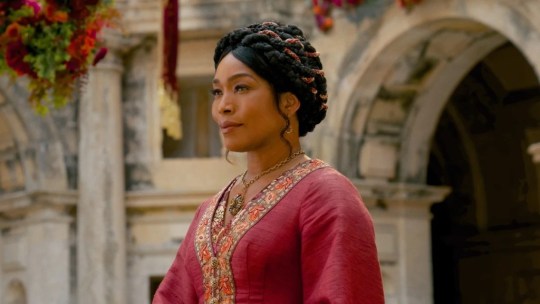

#lady bayford#damsel netflix#angela bassett#medieval#medieval fantasy#black women in medieval fantasy#dark fantasy#dark medieval fantasy#wholesome dark fantasy#need more of this#black women in fantasy
270 notes
·
View notes
Text

Art of my Moon Elf dnd character I might be playing tomorrow <3
#art#character art#digital art#dnd#artist#fantasy art#dungeons and dragons#dnd art#dungeons and dragons art#dnd character#fantasy character#fantasy#high fantasy#medieval fantasy#fantasy women#dark fantasy#concept art#character concept#fantasy concept art#ocs#dnd oc#dnd oc art#dnd ocs#oc#oc art#my ocs#original character#artists on tumblr#my art#drawing
90 notes
·
View notes
Text

Via print:

#art#scifi#cyberpunk#digital art#aesthetic#science fiction#sci fi#scifiart#futuristic#scifi art#sci fi and fantasy#scifi aesthetic#scifi and fantasy#science fantasy#sciencefiction#science fiction art#dark fantasy#fantasy art#fantasy aesthetic#fantasy world#fantasy worldbuilding#fantasy women#warhammer 40k#dark art#dark femininity#dark scifi#medieval armor#plate armor#white hair#not my art
340 notes
·
View notes
Text

tfw your hopeless crush turns into a hopeless lesbian crush
#digital art#ocs#oc art#artists on tumblr#medieval fantasy#illustration#comic#priests#nuns#religion aesthetic#wlw art#butch lesbian#is there a tag for butch priests#i read that sweden has more women priests than men and blacked out#oc:ellis
73 notes
·
View notes
Text




#ai artwork#ai generated#ai girl#ai image#fantasy#fantasy art#painting#ai art#medieval#ai artist#ai sexy#ai babe#ai art gallery#ai art generator#ai#oil painting#sci fi and fantasy#fantasy character#sexy fantasy#magic#ai beauty#beautiful women#beautiful#digital art#artwork#art#paradise#angelcore
270 notes
·
View notes
Photo
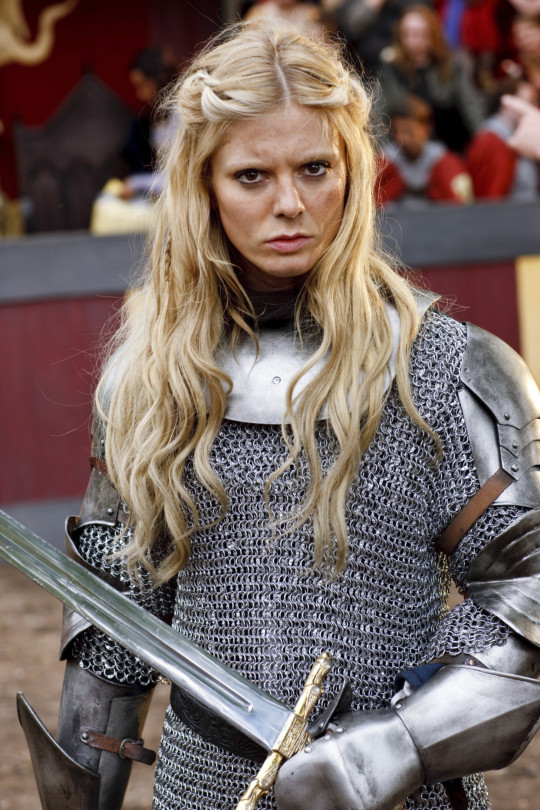
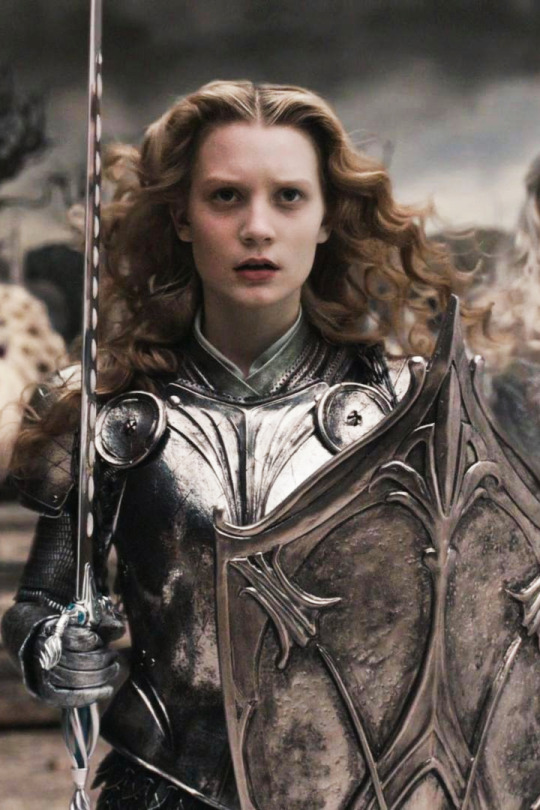

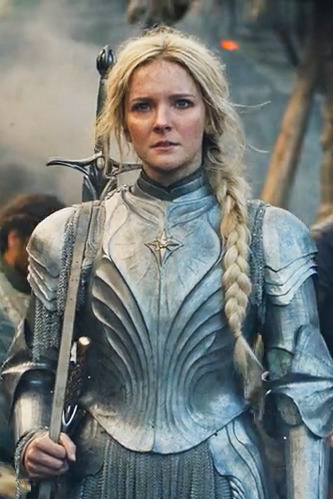
𝒃𝒍𝒐𝒏𝒅𝒆 𝒘𝒐𝒎𝒆𝒏 𝒊𝒏 𝒂𝒓𝒎𝒐𝒖𝒓
#bbc morgause#bbc merlin#alice in wonderland 2010#tim burton's alice in wonderland#emilia fox#mia wasikowska#brienne of tarth#game of thrones#gwendoline christie#rings of power#rop galadriel#commander galadriel#morfydd clark#blonde women in armour#women warriors#women in armor#silver armour#fantasy aesthetic#medieval aesthetic#medieval fantasy#women in medieval fantasy#badass female characters#women with swords
962 notes
·
View notes
Text
So here's one of the coolest things that has happened to me as a Tolkien nut and an amateur medievalist. It's also impacted my view of the way Tolkien writes women. Here's Carl Stephenson in MEDIEVAL FEUDALISM, explaining the roots of the ceremony of knighthood: "In the second century after Christ the Roman historian Tacitus wrote an essay which he called Germania, and which has remained justly famous. He declares that the Germans, though divided into numerous tribes, constitute a single people characterised by common traits and a common mode of life. The typical German is a warrior. [...] Except when armed, they perform no business, either private or public. But it is not their custom that any one should assume arms without the formal approval of the tribe. Before the assembly the youth receives a shield and spear from his father, some other relative, or one of the chief men, and this gift corresponds to the toga virilis among the Romans--making him a citizen rather than a member of a household" (pp 2-3). Got it?
Remember how Tolkien was a medievalist who based his Rohirrim on Anglo-Saxon England, which came from those Germanic tribes Tacitus was talking about? Stephenson argues that the customs described by Tacitus continued into the early middle ages eventually giving rise to the medieval feudal system. One of these customs was the gift of arms, which transformed into the ceremony of knighthood: "Tacitus, it will be remembered, describes the ancient German custom by which a youth was presented with a shield and a spear to mark his attainment of man's estate. What seems to the be same ceremony reappears under the Carolingians. In 791, we are told, Charlemagne caused Prince Louis to be girded with a sword in celebration of his adolescence; and forty-seven years later Louis in turn decorated his fifteen-year-old son Charles "with the arms of manhood, i.e., a sword." Here, obviously, we may see the origin of the later adoubement, which long remained a formal investiture with arms, or with some one of them as a symbol. Thus the Bayeux Tapestry represents the knighting of Earl Harold by William of Normandy under the legend: Hic Willelmus dedit Haroldo arma (Here William gave arms to Harold). [...] Scores of other examples are to be found in the French chronicles and chansons de geste, which, despite much variation of detail, agree on the essentials. And whatever the derivation of the words, the English expression "dubbing to knighthood" must have been closely related to the French adoubement" (pp 47-48.)
In its simplest form, according to Stephenson, the ceremony of knighthood included "at most the presentation of a sword, a few words of admonition, and the accolade." OK. So what does this have to do with Tolkien and his women? AHAHAHAHA I AM SO GLAD YOU ASKED. First of all, let's agree that Tolkien, a medievalist, undoubtedly was aware of all the above. Second, turn with me in your copy of The Lord of the Rings to chapter 6 of The Two Towers, "The King of the Golden Hall", when Theoden and his councillors agree that Eowyn should lead the people while the men are away at war. (This, of course, was something that medieval noblewomen regularly did: one small example is an 1178 letter from a Hospitaller knight serving in the Latin kingdom of Jerusalem which records that before marching out to the battle of Montgisard, "We put the defence of the Tower of David and the whole city in the hands of our women".) But in The Lord of the Rings, there's a little ceremony.
"'Let her be as lord to the Eorlingas, while we are gone.' 'It shall be so,' said Theoden. 'Let the heralds announce to the folk that the Lady Eowyn will lead them!' Then the king sat upon a seat before his doors and Eowyn knelt before him and received from him a sword and a fair corselet."
I YELLED when I realised what I was reading right there. You see, the king doesn't just have the heralds announce that Eowyn is in charge. He gives her weapons.
Theoden makes Eowyn a knight of the Riddermark.
Not only that, but I think this is a huge deal for several reasons. That is, Tolkien knew what he was doing here.
From my reading in medieval history, I'm aware of women choosing to fight and bear arms, as well as becoming military leaders while the men are away at some war or as prisoners. What I haven't seen is women actually receiving knighthood. Anyone could fight as a knight if they could afford the (very pricy) horse and armour, and anyone could lead a nation as long as they were accepted by the leaders. But you just don't see women getting knighted like this.
Tolkien therefore chose to write a medieval-coded society, Rohan, where women arguably had greater equality with men than they did in actual medieval societies.
I think that should tell us something about who Tolkien was as a person and how he viewed women - perhaps he didn't write them with equal parity to men (there are undeniably more prominent male characters in The Lord of the Rings and The Hobbit, at least, than female) but compared to the medieval societies that were his life's work, and arguably even compared to the society he lived in, he was remarkably egalitarian.
I think it should also tell us something about the craft of writing fantasy.
No, you don't have to include gut wrenching misogyny and violence against women in order to write "realistic" medieval-inspired fantasy.
Tolkien's fantasy worlds are DEEPLY informed by medieval history to an extent most laypeople will never fully appreciate. The attitudes, the language, the ABSOLUTELY FLAWLESS use of medieval military tactics...heck, even just the way that people travel long distances on foot...all of it is brilliantly medieval.
The fact that Theoden bestows arms on Eowyn is just one tiny detail that is deeply rooted in medieval history. Even though he's giving those arms to a woman in a fantasy land full of elves and hobbits and wizards, it's still a wonderfully historically accurate detail.
Of course, I've ranted before about how misogyny and sexism wasn't actually as bad in medieval times as a lot of people today think. But from the way SOME fantasy authors talk, you'd think that historical accuracy will disappear in a puff of smoke if every woman in the dragon-infested fantasy land isn't being traumatised on the regular.
Tolkien did better. Be like Tolkien.
#tolkien#middle earth#jrr tolkien#lord of the rings#lotr#the lord of the rings#eowyn#writing fantasy#fantasy#female characters#writing#historical fiction#medieval women#medieval history#medieval#history#womens history
9K notes
·
View notes
Photo
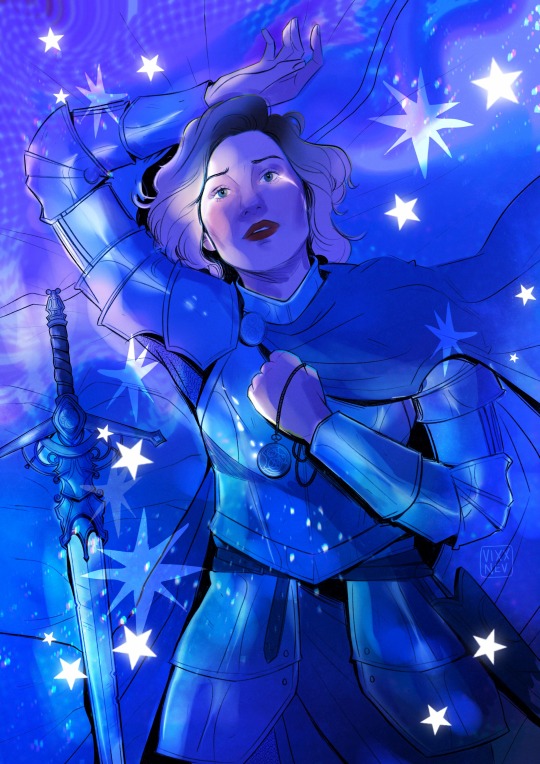
Ok y’all liked knight!13 so much, so here’s another one I haven’t posted here yet! ⚔️✨
#knight!13#knight#women knights#female knight#doctor who#doctor who fan art#doctor who fandom#Thirteenth Doctor#13th doctor#Jodie Whittaker#thasmin au#thasmin#doctor who au#doctor who art#medieval#fantasy#fanart#fan artist#yasmin khan#thirteen x yaz#thirteen and yaz#fanfic#doctor who fanfiction
877 notes
·
View notes
Text

❄️The snowy winters of Fernia, home of the forest elves ❄️
Wanted to attempt something more illustration-y. It's also always good to practice putting characters in scenes.
#worldbuilding#indigo star#dnd#ttrpg#medieval fantasy#armour#elves#elf#dark elf#fantasy character#women in armor#plate armor#knightcore#knights#art#my art#artwork#my artwork#digital art#dreamerx86#snow#winter#trees#illustration#original art
92 notes
·
View notes
Text

#medieval weapons#medieval fantasy#medieval#medieval history#medieval art#medieval knight#medieval aesthetic#old stuff#ancient#aesthetic moodboard#beautiful aesthetic#moodboards#vikings history#vikings#old english#swords#queens#warrior women#warrior#the witcher#witcher#the witcher 3#the old ways#germanic paganism#germanic folklore#folklore#game of thrones#viking history#lore#skal
82 notes
·
View notes